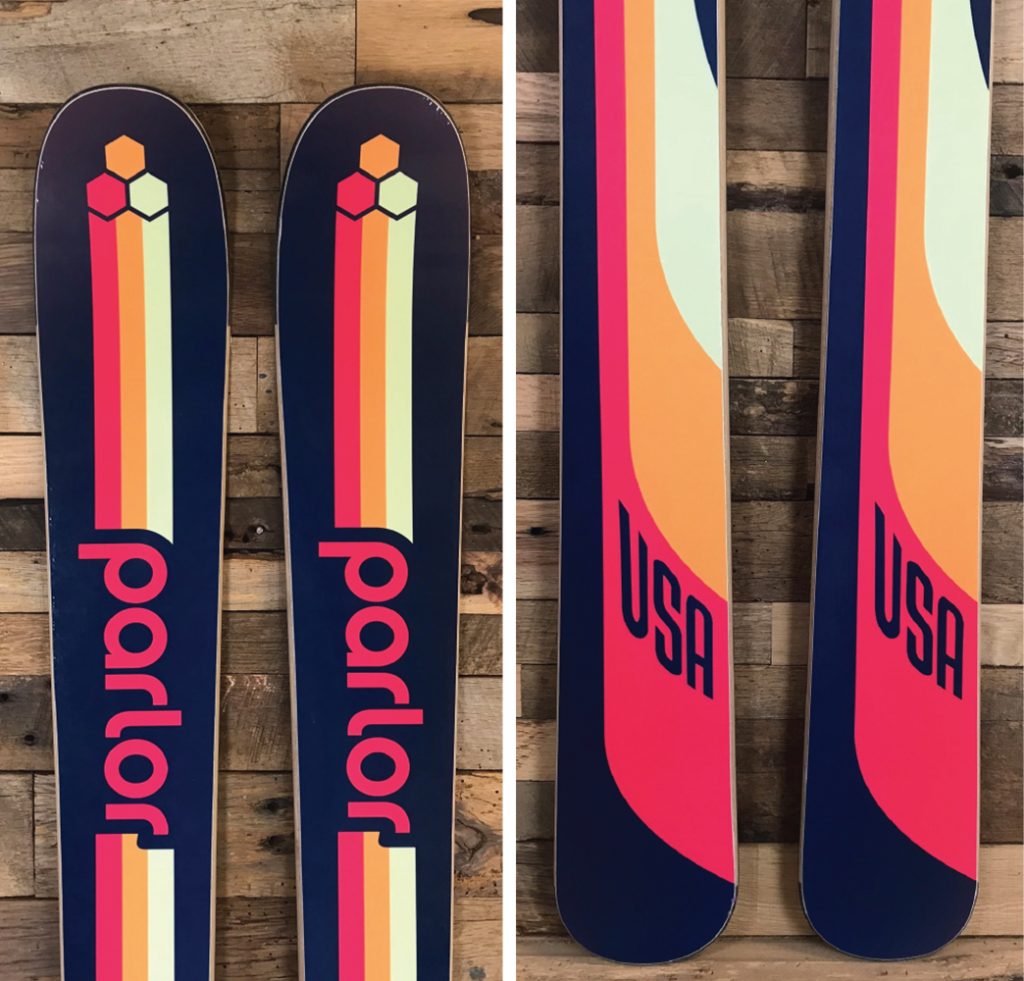Making Custom Skis with New England’s Parlor
Ultra-personalized equipment born of craftsmanship and attentive design

Handmade skis—just like bespoke bike frames—came into favor over a decade ago. Respected brands all over began to make skis covered in striking graphics, one-off photography, typography and more. But Mark Wallace, who co-founded Parlor Custom Skis (located outside Boston) in 2014, says he and his partners, Pete Endres and Jason Epstein, had different priorities. They wanted to focus more on the skis’ guts than the graphics. As ex-racing pros, they tested custom skis from the USA’s west and felt they were too soft for the hard-pack snow of the Northeast and Northwest. “We wanted to make skis for all conditions,” Wallace says, because “a ski that can turn on hard-pack, if you know what you’re doing, can still ski softer snow.” Just as crucial, the team’s racing background informed what they wanted to do for each type of skier: give that individual the ideal tool for the slope, rather than make the skier adjust to the ski.

Wallace explains that even the best ski shops simply don’t have that option. More often, they ask if you prefer skis that turn easily, if you are planning to ski powder or groomers, and where you’re going to hit the slopes. From there, customers get funneled a few different directions. Less ideal again, most skis have to be made for an “average” skier, and if you don’t fit that niche age/height/strength/aggression profile, your skis might not be the best fit for you. This results in them feeling too soft or too hard, possibly chattering on firm snow, not initiating a turn if you’re lighter or too easily overpowered if you’re heavier.

To find out more about Parlor’s process, we meet with Wallace and attend one of the brand’s classes, in which customers come to build their own skis. Parlor is unique for this reason, as well, as most custom builders won’t let you participate in the bulk of the process.

On the day of our visit, Dylan Peck and Chris Martinez—who run NYC’s Alpine Construction and Landscaping and who treated themselves to custom-graphic skis from Parlor in 2016—were visiting to build their own. “Chris really wanted to do this class,” Peck tells us. “I went along for the ride, but then the lightbulb really came on.” Both Peck and Martinez teach kids racing at a ski camp at Windham Mountain in the Catskills. Peck realized he was spending every day on a race ski, but not actually racing, and decided he wanted something more playful. “Now that I’m here doing it, I understand how each individual ski has its own nuances. I not only never had a ski like that—even though, as a racer I can’t count how many skis I’ve had—I never thought about how a ski could be that customized. And I’m making this ski with my own hands.”

Wallace explains that’s precisely the goal of the classes. “It’s not productive for us to do this—it takes about twice as long to make skis this way, but we do it because the only way to prove the quality of what we’re doing is for people to literally see every ingredient that goes into what we’re making. Really, what they’re making.” Parlor still makes the bulk of its skis for customers, but there’s still a lot of guidance, calls and emails to make sure they get a set of skis that truly fits their preferences and the conditions they face most frequently.

And there’s similar guidance and care in the classes. If you’re hesitant to use power tools, one of Parlor’s pros will step in. They also take the make-or-break moments of the process out of your hands. A CNC machine custom-cuts the wood cores, and while customers are involved in every step—from attaching edges to final lay-up (when the core, fiberglass, carbon fiber, and top sheet are epoxied together and fused under a press)—the goal is really to learn about the process as it is to physically undertake the task.
“We bake all the critical math into the skis,” Wallace says of the core construction, ski shape, and edge geometry. Those factors are predetermined to fit the skier precisely. Also, the final tune is done by Parlor’s pros, not the students. “It’s one of those decisions we can make,” he explains. “We spend more time on tuning than most ski companies do on their entire build.”

Sean Campbell—who is also attending the class—is super-excited to be able to immortalize a topographical map from a part of Upstate New York where his family has had property for several generations on the top sheets of the skis he’s building. The map was tough to find. “It’s from a really rural part of the state and I was surprised how hard we had to hunt to get it,” he says. Wallace had the map sent to their house graphics artist so she could figure out how to change the scale so it would work on the tails of the skis.

Wallace notes that while it’s most important that the skis are the best pair the customer has ever carved a turn on, he enjoys hearing how wowed buyers are when they receive their skis. “This is such an important part of skiing,” he says. “This just elevates what it means to be a skier. And we get to be super-proud to share that with people.”
Images by Michael Frank












